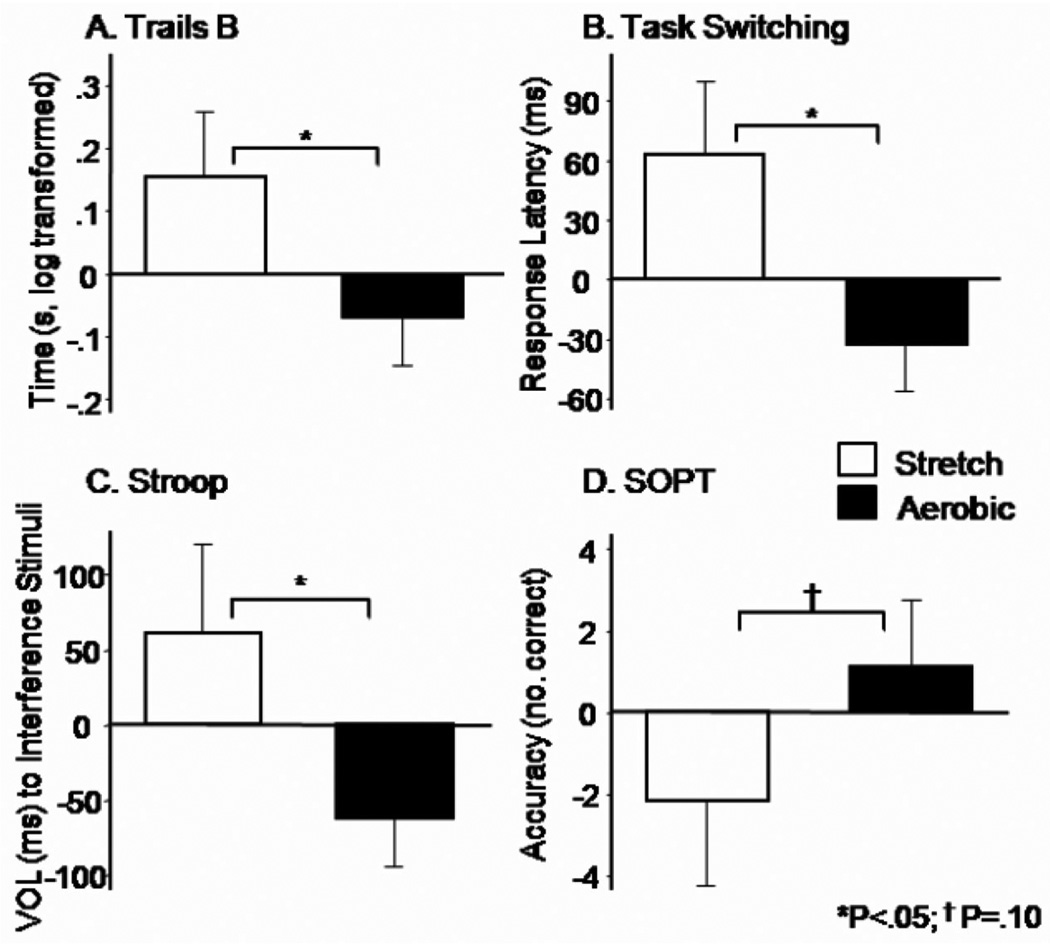Fig. 2.
Treatment effects on cognitive outcomes of executive function. Means (standard error of measurement) represent 6-month change relative to baseline, expressed as difference scores. All means are adjusted for age and gender as well as other task-specific variables when indicated. A) Trails B time to complete the task (seconds, log transformed, adjusted for Trails A time) was faster for subjects in the aerobic group relative to controls, p = 0.04. B) Task Switching response latency for all trials, adjusted for accuracy, was faster for the aerobic group relative to controls, p = 0.03. C) Stroop voice onset latency to interference stimuli was faster for subjects in the aerobic group versus controls, p = 0.04. D) SOPT performance, indexed by number of correct responses across all trials, tended to improve for aerobic exercisers relative to controls, p = 0.10.

